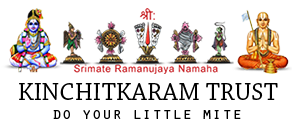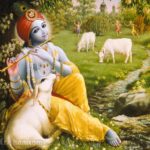Namaskarams!
I heard in Swami’s Vishnu Puranam upanyasam that originally Vedas were one then Sri Veda Vyasar split it into Rig, Yajur, SAma and Atharvanam for Kali Yuga people to better understand. Swami also mentioned that Rig Veda contains all mantras for which the meaning ends in a padam, Yajur Veda contains all mantras in which the meaning may or may not end in a padam. SAma Veda contains song-like mantras and Atharva Veda is a mix of Rig, Yajur and SAma type mantras.
We see that some rituals of Rig Vedis, Yajur Vedis and SAma Vedis change or are different from each other, so does that mean in the original one Veda, there were 3 versions of the same ritual (eg- marriage, seemantham, etc) one version where the rituals are done by chanting mantras of Rig type, one version where the ritual mantras were of Yajur type, and one version where the ritual mantras were of SAma type?
Thank you.

